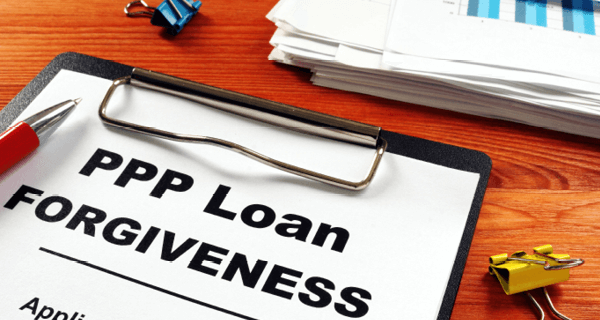As eluded to in our Paycheck Protection Program (PPP or the Program) update last week, President Trump signed the Paycheck Protection Program Flexibility Act (the Flexibility Act or Act) into law on June 5, 2020. The Act provides borrowers of a PPP loan additional time to spend the loan proceeds and reduces the percentage required to be spent on payroll to achieve full forgiveness. Although the Flexibility Act is relatively short, it contains several key changes to the terms of the Program, including loan forgiveness.
Loan Forgiveness
A “new” covered period
One of the most significant changes for borrowers under the Flexibility Act is the expansion of the eight-week period to spend loan proceeds to the earlier of 24 weeks after loan origination or December 31, 2020. Borrowers who received a PPP loan before June 5, 2020, may elect the original eight-week period, if preferred. A key question that accompanies this change is whether the 8/52 limitation on cash compensation paid to an employee with annual compensation over $100,000 will be updated to 24/52 of $100,000. This was not addressed in the Flexibility Act and will likely be clarified through additional guidance from the Department of the Treasury and the Small Business Administration (SBA).
75/25% rule now becomes 60/40%
Another significant change under the Flexibility Act is the revision of the previous rule requiring at least 75% of the loan forgiveness amount sought by borrowers to be comprised of payroll costs, with no more than 25% of this amount consisting of nonpayroll costs (i.e., the 75/25% rule). To allow for greater flexibility in using loan proceeds, the Flexibility Act now requires a borrower seeking forgiveness to use at least 60% of the loan amount for payroll costs and up to 40% for nonpayroll costs. The language of the Flexibility Act, read literally, creates an “all or nothing” threshold in which applications for forgiveness would be denied altogether where borrowers have not spent at least 60% of the loan amount on payroll costs. However, a joint statement issued on June 8, 2020, by U.S. Treasury Secretary Steven T. Mnuchin and SBA Administrator Jovita Carranza provides that the 60/40% rule will be administered to allow for partial loan forgiveness. The joint statement says, “If a borrower uses less than 60 percent of the loan amount for payroll costs during the forgiveness covered period, the borrower will continue to be eligible for partial loan forgiveness, subject to at least 60 percent of the loan forgiveness amount having been used for payroll costs.” (Emphasis added.) Also, in their joint statement, SBA and Treasury said they would promptly issue rules and guidance, a modified borrower application form, and a modified loan forgiveness application implementing the legislative changes from the Flexibility Act.
Extension of time to restore FTEs and salary/wage reductions and new safe harbor exemptions for FTE reductions
Recall that under the CARES Act, a borrower’s forgiveness is reduced if the borrower experiences a decline in full-time equivalent (FTE) employees or reduces certain employee salaries or wages by more than 25% during the eight-week covered period compared to a specified reference period. However, the CARES Act provided a safe harbor under which a borrower’s forgiveness would not be reduced if the borrower restores a reduction in FTEs or employee salaries/wages occurring between February 15 and April 26, 2020 on or before June 30, 2020. The Flexibility Act provides more time for borrowers to satisfy this safe harbor by pushing back the date for restoring FTE employees and salary/wage reductions from June 30, 2020, to December 31, 2020. Also, two additional exemptions from the restoration requirement for FTE employees are now available if borrowers can document either of the following:
- An inability to rehire previous individuals that were employees on February 15, 2020, and an inability to hire similarly qualified employees for open positions on or before December 31, 2020; or
- An inability to return to the same level of business activity that existed before February 15, 2020, due to compliance with established requirements or guidance (i.e., related to standards for sanitation, social distancing or any other worker or customer safety requirement) issued between March 1 and December 31, 2020, by any of the following:
- The Secretary of Health and Human Services,
- The Director of the Centers for Disease Control and Prevention, or
- The Occupational Safety and Health Administration.
Like all things related to loan forgiveness, documentation is vital. Borrowers should ensure they are retaining adequate documentation to support conclusions concerning any safe harbor exemption as well as inputs to the loan forgiveness application.
Other Changes in the Flexibility Act
| Program Term | Previously, the CARES Act provided an “end date” for the Program of June 30, 2020, which raised questions about a borrower’s ability to apply for and receive a PPP loan as well as spend loan proceeds after that date. The Flexibility Act has now extended the date to December 31, 2020. However, in a separate statement, Congress made clear that the last date for which a PPP loan application can be approved is June 30, 2020. |
|---|---|
| Loan Term | For PPP loans originating on or after June 5, 2020, the minimum term of the loan is increased to five years. Borrowers who have previously applied for and received a PPP loan will still have a two-year term for repayment of any remaining loan balance after forgiveness. However, borrowers should check with their lender to see if the lender would extend the terms of their loan. |
| Deferral Period | The deferral period for payments of loan principal, interest and fees was modified to now begin on the date that the amount of loan forgiveness is determined and remitted to the lender. However, borrowers who have not applied for loan forgiveness within ten months from the last day of their covered period will begin paying principal, interest, and fees on that date. |
| Social Security Tax Deferral | Borrowers who have received forgiveness of a PPP loan are now eligible to defer payment of the employer’s share of Social Security taxes that would otherwise be required to be paid during the period beginning March 27, 2020 and ending December 31, 2020. The deferred tax liability will be due in two installments: (1) 50% due on December 31, 2021, and (2) remaining 50% due on December 31, 2022. |
For more information on how the Coronavirus is impacting businesses across multiple industries, visit our COVID-19 resource page:








